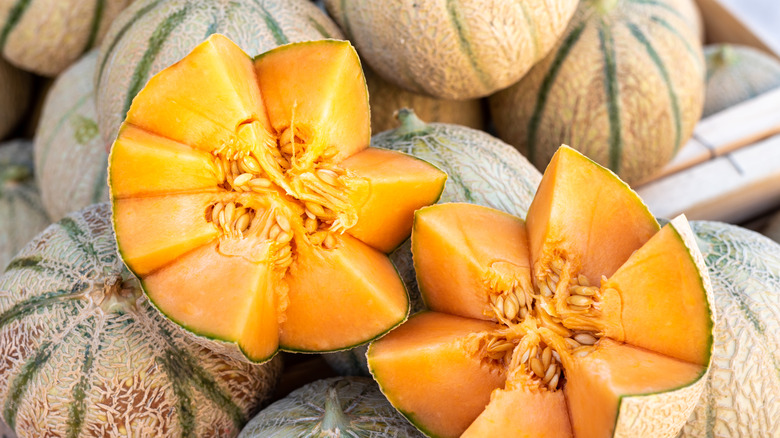Why Cavaillon, France Town Calls Itself The Melon Capital Of The World
The south of France, colloquially called Le Midi in French, is known for many things: its warm climate, purple-blazed fields of lavender, the cliffs of the Calanques which create sparkling Mediterranean fjords along the coast, and of course, the fresh, sweet, and incredibly tasty array of produce grown in the rich, fertile soil. Provence is, according to See Provence, the region that produces over half of France's fruits and vegetables — growing everything from cherries to bell peppers, figs, plums, eggplants, pumpkins, and of course, a summer favorite: melons.
For melon fans, one should head to the commune of Cavaillon, which has been called the melon capital of the world, for their melons that are known as cantaloup or charentais, per The Luberon. These varieties are grown exclusively in the south of France and are not to be confused with your typical mass produced cantaloupe. But what exactly is it that makes the orange-fleshed fruit of Cavaillon so special? Read on to find out.
A knighthood and a melon festival
Imagine a melon so delicious that a brotherhood was formed to protect its reputation. That's exactly what happened in the 1980s when The Knights of the Order of the Melon came together to monitor the quality of the region's famed fruit: Cavaillon's charentais variety of cantaloup, according to Rove. Every summer in July, the town also hosts a melon festival devoted to the sweet fruit. Called the Féria du Melon, locals and tourists alike come from all around to taste the juicy fruit while enjoying festivities like a parade with brass bands. At the festival folks can also discover new, creative ways to use melon alongside local chefs. You can catch a glimpse of a recent fête here.
If you can't make it to the south of France but still want to identify the best melon at your own local market, according to Avignon et Provence, you should first weigh it in your palm. Heavy fruit is a sure sign of juiciness as well as ripeness. Also look for scars on the rind and an easily removable stem, two more signs that the melon is teeming with flavor.

